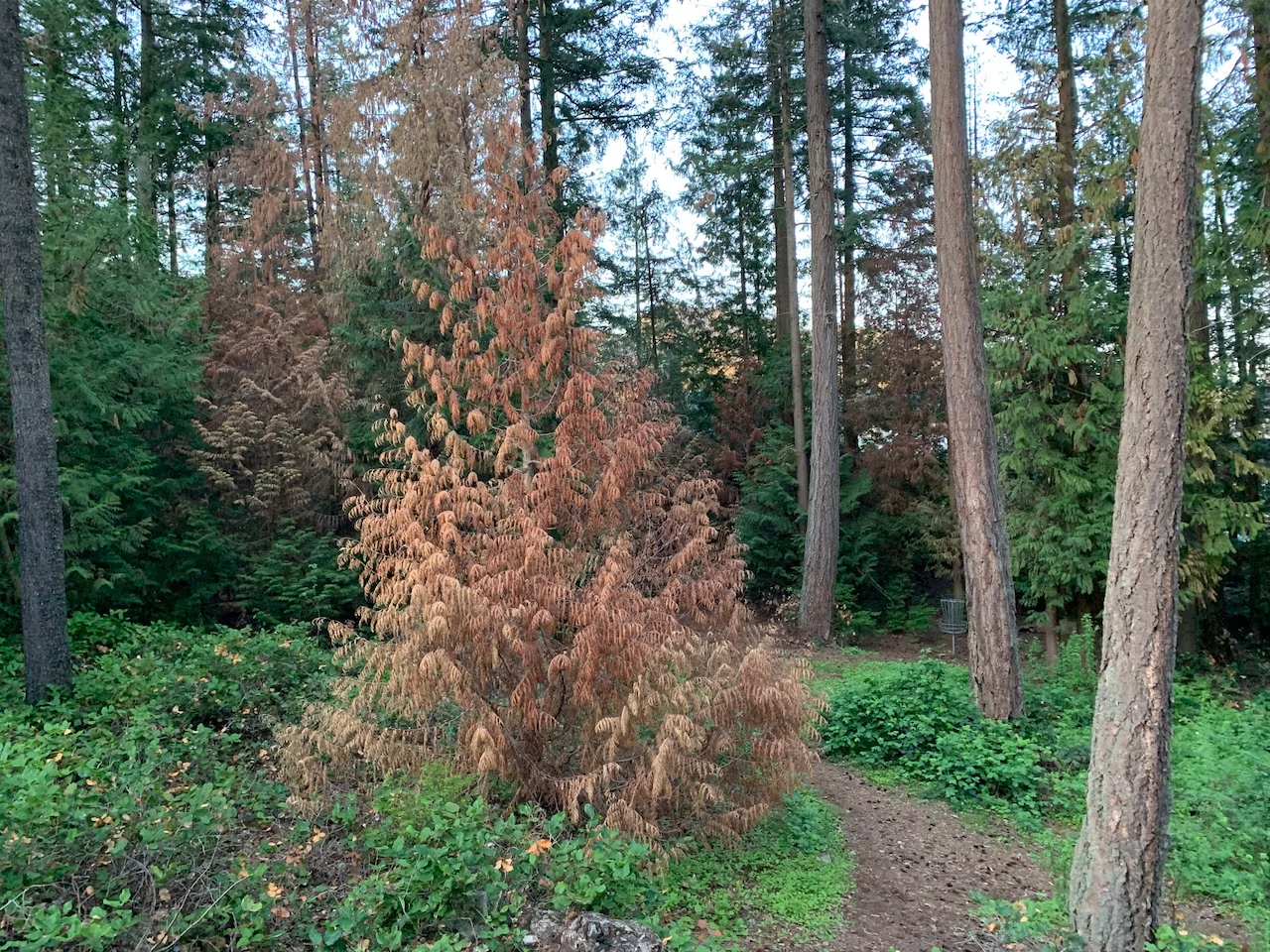7 Reasons Your Cedar Tree Is Turning Brown
Restore your cedar's health

Cedar trees are a popular choice for their lush, evergreen foliage and ability to provide privacy and beauty in any landscape. However, when your cedar tree starts turning brown, it can be concerning. Browning foliage is a common issue, and understanding the underlying causes is essential to restore your cedar's health.
In this article, we’ll explore the reasons why cedar trees turn brown and what you can do to address and prevent this issue.
Common Reasons Why Your Cedar Tree is Turning Brown
1. Seasonal Needle Drop
All evergreen trees, including cedars, shed their older needles periodically. This natural process typically occurs in the fall when older inner needles turn yellow or brown and drop off.
Signs:
- Browning occurs only on older, inner needles, while the tips remain green.
- Browning happens uniformly across the tree.
Solution:
- No action is needed. This is a natural process and not a cause for concern.
2. Drought Stress
Cedar trees require consistent moisture, especially during hot, dry periods. A lack of water can cause stress, leading to browning needles.
Signs:
- Browning starts at the tips of branches and progresses inward.
- Soil around the tree is dry or compacted.
Solution:
- Water deeply during dry periods, ensuring the soil stays moist but not waterlogged.
- Apply mulch around the base of the tree to retain soil moisture.
3. Overwatering or Poor Drainage
While cedars need moisture, too much water can be just as harmful as too little. Overwatering or waterlogged soil can lead to root rot and browning needles.
Signs:
- Browning appears randomly across the tree.
- Soil remains constantly wet or soggy.
Solution:
- Improve drainage around the tree by aerating the soil or redirecting water away from the roots.
- Water only when the topsoil feels dry to the touch.
4. Fungal Diseases
Cedar trees are susceptible to several fungal diseases, such as cedar rust and root rot, which can cause browning foliage.
Signs:
- Browning starts on specific branches and spreads.
- Presence of cankers, fungal growth, or discolored bark.
Solution:
- Prune affected branches and dispose of them properly.
- Apply fungicides as recommended for the specific fungal issue.
- Improve air circulation around the tree by thinning nearby plants.
5. Insect Infestations
Certain pests, such as spider mites, bark beetles, and cedar leaf miners, can cause cedar trees to turn brown. These insects feed on the tree’s foliage or bark, damaging its health.
Signs:
- Small holes in bark or foliage.
- Fine webbing (spider mites) or sawdust-like material (bark beetles).
- Browning concentrated in specific areas.
Solution:
- Inspect the tree for signs of pests.
- Use insecticidal soap or horticultural oil to treat infestations.
- For severe infestations, consult a professional arborist for pest management.
6. Winter Burn
In cold climates or during harsh winters, cedar trees can experience winter burn. This occurs when foliage loses moisture due to cold, dry winds and freezing temperatures.
Signs:
- Browning appears on the side of the tree exposed to wind or sun.
- Damage occurs in late winter or early spring.
Solution:
- Protect cedars from winter burn by wrapping them in burlap during cold months.
- Water the tree thoroughly before the ground freezes to ensure it has adequate moisture.
7. Transplant Shock
If your cedar tree was recently planted or moved, it might experience transplant shock as it adjusts to its new environment.
Signs:
- Browning appears shortly after planting or transplanting.
- Limited new growth or signs of stress.
Solution:
- Water the tree consistently to help establish its roots.
- Avoid fertilizing during the first growing season, as this can stress the tree further.
8. Nutrient Deficiency
Cedar trees require specific nutrients to thrive. A lack of essential nutrients, such as nitrogen or iron, can lead to browning foliage.
Signs:
- General discoloration, including pale or yellowish leaves before browning.
- Slow or stunted growth.
Solution:
- Conduct a soil test to identify nutrient deficiencies.
- Apply a balanced fertilizer designed for evergreen trees.
9. Damage from Lawn Equipment or Chemicals
Accidental damage from lawnmowers, weed trimmers, or the use of herbicides near the tree can harm the bark or roots, leading to browning.
Signs:
- Browning near the base or on branches close to the ground.
- Visible damage to bark or roots.
Solution:
- Avoid using lawn equipment too close to the tree.
- Use chemical treatments cautiously and keep them away from the tree’s root zone.
How to Prevent Browning in Cedar Trees
- Choose the Right Location: Plant your cedar in a spot with well-draining soil and adequate sunlight.
- Water Wisely: Maintain consistent moisture levels without overwatering.
- Regular Inspections: Check your tree for pests, diseases, or signs of stress.
- Prune Properly: Remove dead or diseased branches to encourage healthy growth.
- Protect from Harsh Conditions: Use mulch and burlap to shield the tree from extreme weather.
When to Call a Professional
If your cedar tree’s browning persists despite your efforts, or if you notice significant dieback, it’s time to call in the experts. A professional arborist can:
- Diagnose the issue accurately.
- Treat diseases or pests effectively.
- Provide tailored advice to restore your cedar’s health.
Keep Your Cedar Trees Healthy with Ascent Yard Care
Cedar trees are a valuable part of your landscape, and with the right care, they can thrive for years. If your cedar tree is turning brown, Ascent Yard Care can help. Our expert team provides comprehensive tree care services, including pruning, pest management, and soil improvement, to keep your trees healthy and beautiful.
Contact Ascent Yard Care today for professional tree care services in Victoria, BC, and let us help you restore your cedar trees to their full glory!
